The most common sheep breeds
When dealing with animal husbandry, there are many nuances to consider. Not all animals are adapted to cold or warm climates. There are differences within the same species. This article will focus on sheep and rams. Consider what breeds of sheep are popular and talk about the features of each.
- Varieties of sheep and rams
- Karakul breed
- Productivity indicators
- Caucasian breed
- Productivity indicators
- Latvian dark-headed breed
- Productivity indicators
- Edelbay
- Productivity indicators
- Ostfriesian breed
- Productivity indicators
- Buubei
- Productivity indicators
- Tashlin breed
- Productivity indicators
- Vyatka breed
- Productivity indicators
- Lacon
- Productivity indicators
- East Frisian breed
- Productivity indicators
- Performance indicators of some breeds
- Common and elite breeds
- Conclusion
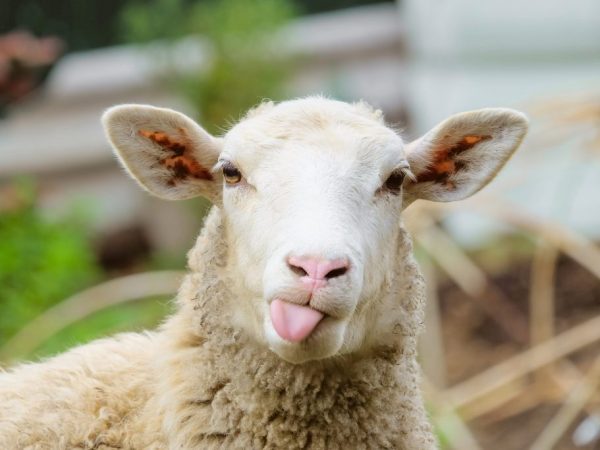
The most common sheep breeds
Varieties of sheep and rams
There is a special classification of sheep. Each breed belongs to a specific type. Some sheep are valued for meat (meat breeds), others for fleece (wool breeds), and still others for fat tail (greasy species). There are few narrowly targeted rocks. Basically, zootechnicians breed animals that have good performance indicators in 2-3 directions.
There are other features that can be taken as a basis for the classification. There are horned and hornless sheep, fat-tailed and not very, hairless and covered with wool. But animals are classified precisely by the nature of the direction of the breed.
Karakul breed
The Karakul breed of sheep is one of the most ancient meat varieties. It is bred in many European countries, in Africa, America and Asia. In addition to delicious meat, sheep have an excellent skin. The Karakul sheep appeared thanks to the work of breeders from Uzbekistan. The peculiarity of the sheep of this breed is the presence of a long tail, but the rams do not straighten it, therefore it hardly reaches the hocks.
If we talk about the features of the exterior, then the astrakhan is a hump-nosed ram with medium-length ears. The massive body is held by slender limbs that end in powerful hooves. The head, legs and neck are covered with a short hair dyed black. Over time, most of the coat, regardless of its original color, turns gray. The process of depigmentation is characterized by breeders as graying.
The wool of astrakhan sheep can be dyed black or gray. About 10% of the sheep are of the sura color. About 4% of sheep are white or brown. Individuals with pink hair are sometimes found.
Productivity indicators
In addition to wool, Karakul sheep are valued for delicious meat. The meat production is 65 kg for sheep and 45 kg for queens. A newborn lamb rarely weighs more than 4.5 kg. Lambs quickly gain weight, which is the advantage of the breed. Excellent sheep's cheeses are prepared from the abomasum obtained from 1-2-day-old lambs and sheep's milk. Livestock breeders also make money on sheep's wool. From rams it turns out to shear about 4 kg of wool in a year.An average of 3 kg of wool is sheared from sheep.
Fertility is another important trait for livestock breeders. A herd of 100 queens produces 140 lambs annually.
Caucasian breed
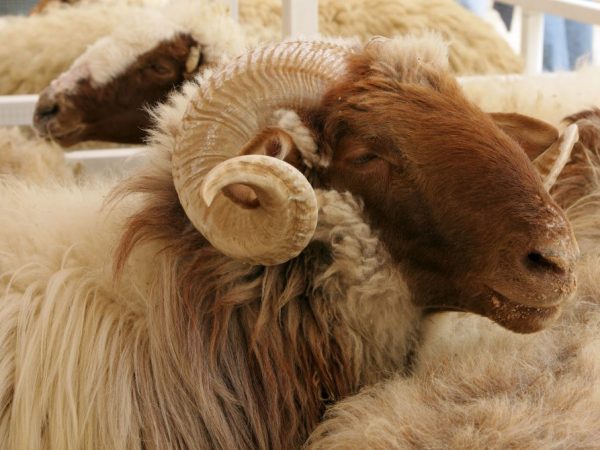
Sheep with beautiful horns
The Caucasian breed of sheep was born thanks to the work of breeders of the Stavropol Territory. It belongs to the meat-wool type. It is a large sheep with long hair. The breed has had a positive impact on the development of all fine wool breeds. Sheep of the Caucasian breed can be found throughout Russia, but it is most common in the Caucasus.
The body of Caucasian rams is folded in proportion. They have well-developed muscles, cervical folds are present, the head, belly and legs are covered with thick wool.
In Caucasian sheep horns are absent, in rams they are well developed. Queens are used to improve existing and create new breeds. The only drawback that this breed of sheep possesses is the absence in some cases of thick wool on the belly and head. But such a phenomenon is rare and is due to the lack of breeding work. Another negative effect on the quality of wool is the lack of all vitamins and nutrients necessary for an animal, therefore, when keeping a Caucasian breed of sheep, you should carefully consider the diet of animals. Sheep of this breed slowly gain weight.
Caucasian rams are unpretentious in care, which makes them popular outside of Russia.
Productivity indicators
The meat productivity of this breed of sheep leaves much to be desired. The weight of an adult ram varies between 80-101 kg, for a sheep - 50-60 kg. It is worth making a reservation about the excellent taste of meat, for which it is appreciated. The cut is an average of 7.5 kg. When processing shear, 50% of pure wool is obtained.
Fertility is 150 lambs per 100 queens. Milk productivity - 100 kg for a 70-day lactation period. The fat content of milk sometimes reaches 8%. The average is 6%.
Latvian dark-headed breed
The Latvian dark-headed sheep breed is the result of the work of Latvian zootechnicians, whose goal was to obtain highly productive beef rams. They did not quite cope with this task, since the indicators of meat productivity are average. The breed became widespread not only in the territory of Latvia, but also in Russia.
As for the exterior, the animals have good meaty forms and a strong constitution. For their weight, they look quite graceful, thanks to their thin bones. A short and wide enough head is connected to the body by a short neck. The rams have a wide back and the same chest that goes deep to match the head. The body rests on widely spaced straight limbs. The predominantly white fleece color is up to 9 cm long. Sometimes there are separate hairs, dyed in other colors.
Productivity indicators
The live weight of rams is 1 centner. An adult dark-headed sheep weighs about 60 kg. This is an early maturing breed. Lambs quickly gain weight, due to the high milk productivity of queens during lactation (about 180 kg of milk). The net meat yield after slaughter is 60%.
Fertility of queens is 170 lambs per 100 queens. Sheared - 5 and 3.5 kg for rams and sheep. After processing the shear, up to 55% of high-quality wool remains. Based on productivity indicators, the Latvian dark-headed breed is classified as a meat-wool type.
Edelbay
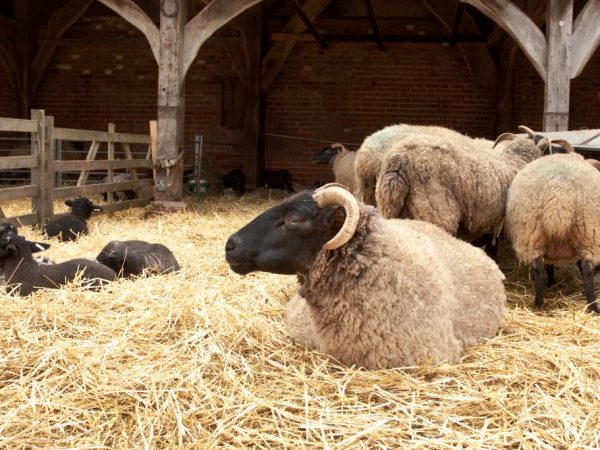
Raising sheep for meat
Edelbay are considered the most beautiful among the representatives of the meat and lard trend. They are well built, the fat tail has a square format. The height at the withers of an adult animal is 80 cm, and the body length is 82-83 cm. But these are average indicators that may vary slightly.
The coat is colored black, red or brown. The latter is rare. Studies have shown that red Edelbay have lower levels of wool and meat productivity than their black and brown counterparts.
Productivity indicators
Sheep are gaining up to 160 kg of weight. On average, the meat productivity of rams is 115 kg, of queens - 95 kg. Females gain weight faster. The weight of a newborn lamb is 6 kg. The bright ones weigh 1 kg less. By the age of 4 months, the weight of the fat tail laid in the back of the body is 40 kg. Daily gain with appropriate nutrition - 200 g. Edelbay lamb meat is considered dietary and highly valued in the market.
This breed of sheep is not fertile. Queens rarely produce 3 lambs per year. During lactation, sheep give an average of 150 liters of milk with a fat content of 6%. Sometimes the fat content of milk is 9%.
Woolen productivity of Edelbay rams is also impressive. It is 5 and 2.5 kg for rams and sheep. Moreover, more than 50% of the cut is down. Dead hairs are practically absent.
Ostfriesian breed
The Ost-Friesian breed is originally from Germany. It is versatile. It is prized for its meat, lard and wool.
Ost-Friesian rams are large in size. They have a curved nose line, there is no fleece on the head and thin tail. Long ears are directed towards the nose. The chest and back are broad, with drooping croup. Ostfriesian rams have well-developed muscles. The coat is white.
Sheep of this breed do not differ in endurance and do not tolerate climate change, but if a purebred sheep is crossed with a local breed that has endurance, it will turn out to increase the level of endurance and acclimatization.
Productivity indicators
The weight of an adult ram is 115 kg. The uterus weighs 30 kg less. By 12 months, the Friesian sheep practically reaches its maximum weight, which makes it possible to classify this breed as early maturing. The daily gain with proper care and quality nutrition exceeds 300 g.
Shearing of wool is 6 and 4.5 kg per ram and sheep, respectively. The fleece is short and soft to the touch. The net output of the rune is 70%. Milk productivity - 650 kg per lactation. Some farmers breed Ostfriesian sheep precisely for the sake of obtaining milk with a fat content of 6.5%.
Buubei
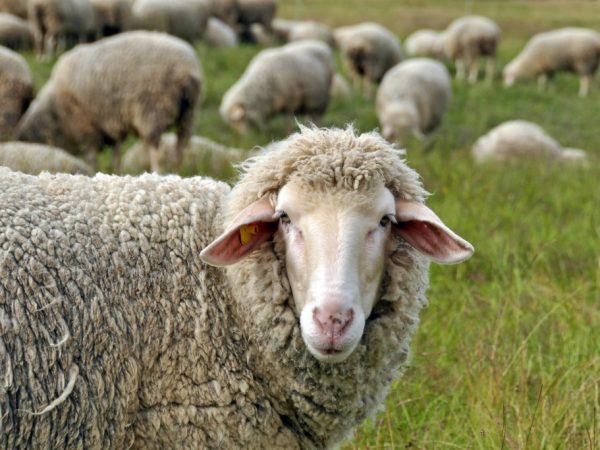
Sheep can live outdoors
Buubei is a beef breed native to Buryatia. This Buryat sheep is also valued for its high quality fleece. Buubei sheep tolerate low temperatures well. They are suitable for pasture-type housing. It is enough to build a canopy on the site that will protect animals from natural precipitation and strong winds.
Buubei are well built, with a large body and slender legs. The body is rectangular and ends with a short tail. The head is neat, the line of the nose is curved. The fleece is dyed white and consists of down and axial hair. At the same time, in percentage terms, down accounts for 80% of the total wool cover.
Productivity indicators
The meat production is 95 kg for sheep and 55 kg for sheep. This is an early maturing breed. In the first 7 months of life, lambs gain 40 kg. If we talk about the net yield after slaughter, it is 50%. Meat without the specific smell of mutton.
Woolen productivity is low. It is 1.5 and 1 kg in rams and queens, but the resulting wool is of high quality. Its length reaches 20 cm. With regard to fertility, Buubei has high rates. A flock of 100 sheep gives birth to 95 heads. It is also difficult to find a sheep that has more developed maternal instincts than the Buubei queens.
Tashlin breed
The Tashlinskaya breed was bred in 2008 by zootechnicians of the Stavropol Territory. These are rams of meat orientation, however, Tashlinsky sheep have excellent quality fleece and high indicators of milk productivity. Farmers also note the fertility of the Tashlinsky queens.
The representatives of this breed have no horns. They are well built, the shape corresponds to the meat orientation of the breed.
Productivity indicators
Meat productivity is 96 and 60 kg for sheep and sheep, respectively. Lambs gain weight well.Daily gain during the first 5 months is 200-220 g. Sometimes the weight gain reaches 400 g per day. But such results can be achieved only by organizing proper nutrition.
Woolen production is 6.5 kg for sheep and 4.5 kg for sheep. Moreover, the net yield is more than 60%. The length of the rune of the Tashlinsky sheep is 115 mm. A herd of 100 queens gives birth to 160 lambs and is bright.
It is beneficial to slaughter lambs at the age of 9 months. This is due to the fact that the percentage of meat and bones during this period is 80 to 20.
Vyatka breed
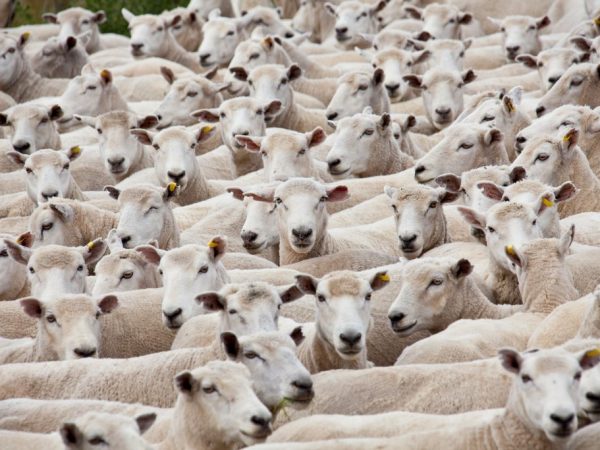
Disease-resistant breed
The Vyatka breed was born thanks to the work of Russian livestock specialists. During the selection, the breeds Soviet Merino and Prekos were used. This is a large sheep of meat and wool orientation. It looks massive and has a square format. The advantages of the breed include resistance to many diseases, adaptability to difficult climatic conditions, unpretentiousness in food, early maturity. The head is covered with thick and long hair. The short nose is not curved, the ears are protruding to the sides.
Productivity indicators
The weight of an adult ram reaches 1 centner. The sheep weighs 50 kg less. If we talk about the maximum indicators of productivity, then it is 140 and 80 kg for rams and sheep, respectively. The meat is appreciated for its taste. It can even compete with marbled beef.
Sheared wool from a ram - 6 kg. The female gives 2 times less high quality rune. Some individuals produce 12 kg of wool per year. The length of the rune is 8.5 cm. The output of the rune after cleaning is 55%. A herd of 100 queens gives birth to 140 lambs with strong immunity.
Vyatka sheep are popular in Russia and Ukraine.
Lacon
The homeland of Lacon sheep is France. They have high rates of meat and dairy productivity, are valued for high quality fleece. During the selection, sheep of the Merino breed (fat tails) were used. French zootechnicians were eager to get a dairy sheep. Thoroughbred Lacons are the best dairy sheep in France.
Externally, the Lacons have a well-developed bone structure, deep chest and muscular rear. The semi-thin coat is colored white and yellow. This is the most widespread breed in France. It is from her milk that almost all sheep cheeses are made on the territory of this country.
Productivity indicators
An adult ram weighs about 90 kg. The sheep is 45 kg lighter. During the lactation period, a sheep gives about 150 liters of milk. Sometimes milk yield is more than 200 liters per sheep. Fertility is lambs per herd of 100 queens. They begin to happen brightly upon reaching 7 months of age.
East Frisian breed
German zootechnicians are engaged in the breeding of the East Frisian sheep breed. Of all the Friesian breeds, it has gained the most popularity. This is due to its high levels of meat productivity. There are individuals whose live weight reaches 150 kg.
The sheep has high graceful legs and a medium-sized, proportionally folded body. There is no hair on the elongated head, there are no horns. Compared to all other parts of the body, the chest is well developed. There is no fleece on the long tail. The body is covered with uniform hair.
Productivity indicators
According to the productivity table, the weight of a ram varies from 110 to 130 kg. The sheep weighs 40 kg less. With proper maintenance, the daily gain is 200 g. Lambs grow faster brightly. Shearing is on average 3 kg (yield - 70%). A lactating sheep during lactation gives 650 kg of milk with a fat content of 6.5%. A purebred herd is kept mainly for milk production.
Performance indicators of some breeds
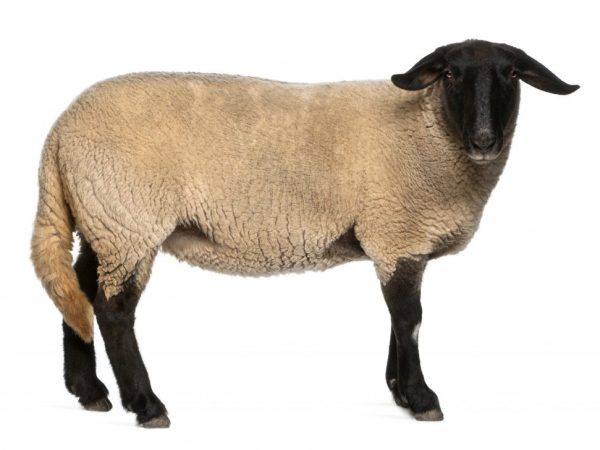
Powerful sheep
It is not possible to consider the description of the breeds that livestock specialists from all over the world are breeding. Consider the performance indicators of some interesting varieties bred in different countries.
- The North Caucasian breed is highly fertile (125%). Its meat productivity is 100 and 60 kg for sheep and queens.
- Zootechnicians of Tatarstan have achieved great success in sheep breeding. Edilbaevskaya breed, for example, is easy to maintain and has high levels of meat productivity (100 kg). The Kuibyshev long-haired breed is valued for its fleece. Its length is 12 cm. The meat productivity of the breed is 90 and 60 kg.
- The sheep breeds bred in Dagestan are also popular all over the world. The best Dagestan breeds, the population of which are being increased by local zootechnicians, are the Gergebil fat-tailed, Gissar and Grozny breeds. And, of course, the Dagestan breed, which is valued for its fertility and fleece, which is annually sheared from a sheep by 3.5-4 kg.
- Kazakhstani zootechnicians raise lamb of impressive size. So, for example, the Kazakh breed bred in Kazakhstan grows to 150 kg. The same characteristics of meat productivity and the Edilbaevskaya breed, which is also bred in Kazakhstan.
- Askanian sheep, bred by Ukrainian zootechnicians, is famous for shearing. In rams, it is 17.5 kg. Sheep are 8 kg inferior. But the net yield of wool that the Askanian sheep gives is only 45%. It is not uniform, but of high quality.
- The Gorky sheep, widespread in Russia, is valued for wool, milk and early maturity. Daily gain exceeds 200 g, and milk yield during lactation is 150 kg. These sheep bred in Russia are fertile and unpretentious in care.
- The Kalmyk sheep bred in Kalmykia is popular. She is prolific, gives up to 17 kg of fat tail and has a specific color. Her chest and head are black and the rest of her coat is white. This sheep is unlike any other breed.
- The northern short-tailed sheep cannot boast of high levels of meat production. The annual shears of wool leave much to be desired, but the Northern breed is fertile and unpretentious. It is ideal for small households.
Common and elite breeds
If we talk about the most common breeds, then these include Gorkovskaya, Saradzhinskaya, Yaroslavskaya, Kulundinskaya, Gusarskaya, Gruzinskaya, Charolais, West Siberian. But in different regions they are engaged in breeding breeds, the maintenance of which will not cause trouble due to the climatic characteristics of the region and the available feed. So, in Siberia, the West Siberian meat breed is most widespread, and in Australia - the Merino sheep breed. In Europe, such breeds with interesting names as Balbaz, Blue doo Main, Asaf, Lakayune, Finnish Landrace, Zwartbles (Dutch sheep breed), Katadin and Lincoln are popular. The West Siberian breed has high levels of meat and wool productivity.
There are also expensive elite breeds. These include Romney March. Their coat can be silver, chocolate or cream colored. The Romney Marsh is a meaty breed that attracts attention with its appearance. Even the legs of the Romney March are covered with uniform wool. Most pedigree sheep do not have this feature.
Conclusion
Choosing lambs and bright is not as easy as it seems. We have considered not all breeds that deserve attention. Sheep of the Katunskaya, Volgograd, Aganskaya, Orlovskaya, Shlenskaya, Edelbaevskaya, Kalmyk, Kazakh and Krasnodar breeds are popular among farmers. Arouses interest among farmers Mongolian, Salskaya, Frolovskaya, Aginskaya, Vladimirskaya, Tushinskaya, Moscow, Leningradskaya, Gypsy, Vendeyskaya, South Ural, Adygeiskaya, Altai, Sokolskaya, Zabaikalskaya, Kuchugurovskaya, Lithuanian and North Caucasian breeds.
Each variety has advantages and disadvantages. It is not possible to say which breed is better, since all animals are representatives of different types of orientation.For breeding livestock in a breeding farm, it is advisable to use some breeds, for breeding at home - others.


